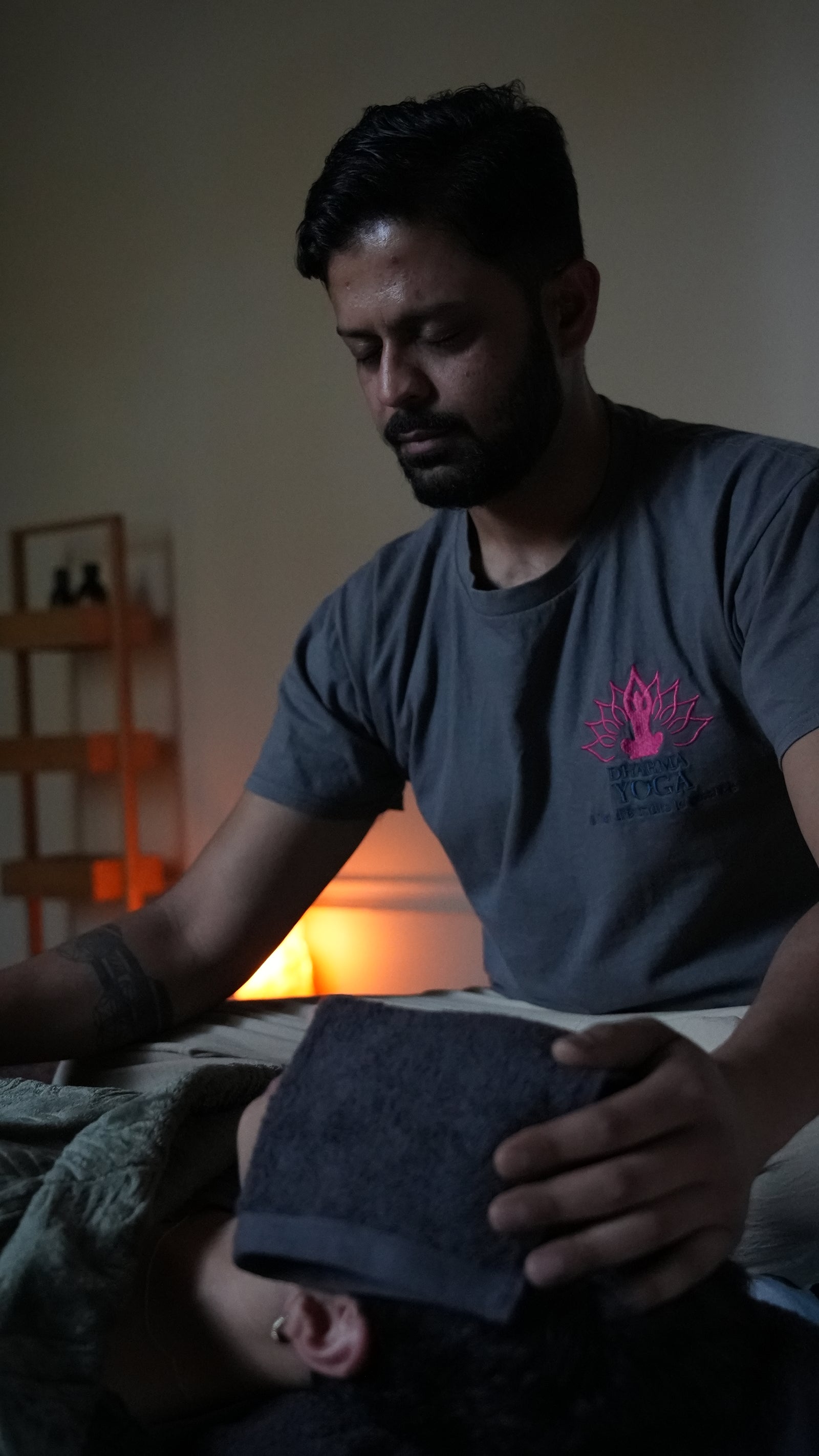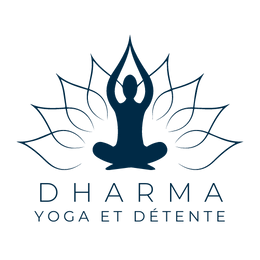Energy healing, as understood in ancient yogic texts by Tuhin Roy

Energy healing, as understood in ancient yogic texts, is deeply intertwined with the concepts of the five elements (Pancha Mahabhutas) and the koshas (sheaths). In yogic philosophy, including texts like the Upanishads and the Yoga Sutras of Patanjali, the human body-mind complex is seen as a manifestation of these elements, and the balance and flow of energy within this complex are crucial
for overall well-being and spiritual growth. Here's how the elements and koshas relate to energy healing in ancient yogic texts:
1. Elements and Energy Flow:
- According to yogic philosophy, each of the five elements represents a different aspect of energy and has its unique qualities and functions.
- Energy healing practices aim to balance and harmonize the flow of energy (prana) within the body, which is influenced by the elements.
- For example, the Earth element (Prithvi) governs stability and grounding, while the Air element (Vayu) governs movement and expansion. Imbalances in these elements can manifest as physical or energetic blockages, which energy healers seek to address.
2. Koshas and Energetic Layers:
- The koshas represent layers or sheaths that envelop the self or consciousness, ranging from thephysical to the spiritual.
- Energy healing works on multiple levels, addressing imbalances not only in the physical body but also in the energetic, mental, emotional, and spiritual dimensions represented by the koshas.
- By working with the koshas, energy healers aim to restore balance and flow within each layer,vfacilitating holistic healing and transformation.
3. Practices and Techniques:
- Energy healing practices in yoga may include techniques such as pranayama (breath control), asana (yoga postures), meditation, mantra chanting, and visualization.
- These practices help regulate the flow of prana (life force energy) within the body and balance the elements associated with each kosha.
- For example, pranayama practices can regulate the flow of prana through the breath, influencing the Pranamaya Kosha and its connection to the Air element (Vayu).
4. Integration and Wholeness:
- In energy healing, the goal is not only to address specific symptoms or ailments but also to facilitate a deeper sense of integration and wholeness across all levels of being.
- By harmonizing the elements and balancing the koshas, individuals can experience greater vitality, resilience, and spiritual awareness.
- Ultimately, energy healing in the yogic tradition is about restoring alignment with the natural rhythms of the universe and realizing the inherent interconnectedness of all life.
In summary, energy healing in ancient yogic texts is intricately linked to the concepts of the elements and koshas, with practices aimed at restoring balance and vitality on physical, energetic, mental, emotional, and spiritual levels. Through these practices, individuals can cultivate greater well-being, harmony, and realization of their true nature.
Energy permeates all things, captivating our species with its profound influence on our bodies and the world. This enigmatic force, known by various names like chi or consciousness, infuses our being from the very moment of conception.
At the point of our inception, this energy becomes the guiding intelligence orchestrating the division and purpose of each cell, ultimately forming the trillions of cells that compose our remarkable bodies. Modern science has validated the existence of this energy, employing tools such as Kirlian photography, which emerged in the late 1930s, to capture tangible evidence.
Armed with this understanding, various practices have evolved to nurture and harmonize this individual energy. Reiki, Qigong, Tai Chi, Meditation, Yoga, and Feng Shui, among others, offer diverse avenues for enhancing the flow of this life force.
Within us all resides the innate power for self-healing, as our bodies continually strive to maintain equilibrium. It is this inner energy that guides the body in its efforts to repair and regenerate as needed.
In times of yore, our ancestors possessed an inherent wisdom that allowed them to heal and sustain their vitality. However, over the ages, our focus has shifted outward, causing us to lose sight of our inner selves.
Compared to our personal energy, Reiki stands as the connecting force between our higher selves and the interconnected universe. Utilizing Reiki energy empowers us to harmonize our own energy and bodies. We find ourselves in an era where science is beginning to validate the presence of these energies that envelop and reside within each of us. The wisdom encapsulated in the Buddhist proverb, "When a student is ready, the teacher appears," often rings true in the context of Reiki. You may have embarked upon this journey at precisely the right juncture in your life. Reiki serves as the intelligent life force that links us to what we truly require.
Our potential is vast, but to unlock the full extent of our innate power, a shift in focus is imperative.
Reiki serves as more than a mere tool for physical healing; it encompasses mental and spiritual growth. Dr. Usui's original intention in formalizing Reiki was to facilitate spiritual development, with the physical healing that ensued being an unintended consequence of heightened awareness. Reiki is a profound gift bestowed upon each of us, awaiting our willingness to embrace its energy. By opening your mind to this force, you will find yourself attuned to the synchronicities in your life, allowing it to flow with greater ease. The astonishing life force is already within you, and this course is designed to illuminate how to harness its potential.
In our early years, we instinctively tapped into Reiki energy. As children, a mother's comforting touch or a symbolic kiss to make pain vanish inadvertently utilized Reiki energy to soothe and heal. Even now, we naturally cradle and protect injured areas, intuitively drawing in Reiki energy to aid in their recovery. This energy source is abundant and accessible to all. No single individual or organization holds exclusive rights to it; Reiki remains untrademarked and unpatented. To tap into Reiki energy, all that is required is the intention to align with it and the readiness to let your intellect yield to the wisdom of your heart, allowing it to guide your journey.
History of Reiki and Dr Usui:
The history of Dr. Mikao Usui and Reiki is often a topic of interest and discussion among practitioners and scholars. While there are various accounts of his life and the development of Reiki.
1. Early Life of Dr. Mikao Usui: Mikao Usui was born on August 15, 1865, in the village of Taniai in the Yamagata district of Gifu Prefecture, Japan. Not much is known about his early life, although it's believed he came from a wealthy family and received a good education, including studying medicine, psychology, religion, and martial arts.
2. Spiritual Quest and Reiki Discovery: Around 1914, Dr. Usui embarked on a spiritual quest, seeking to understand how ancient spiritual practices could lead to healing and enlightenment. Legend has it that he went on a 21-day meditation retreat on Mount Kurama, a sacred mountain near Kyoto, where he experienced a profound spiritual awakening. During this retreat, he reportedly received the Reiki symbols and the ability to heal through energy transfer.
3. Development of the Usui System of Reiki Healing: Following his spiritual experience on Mount Kurama, Dr. Usui returned to Tokyo and began practicing and teaching what would later become known as the Usui System of Reiki Healing. He established a clinic and a school called the Usui Reiki Ryoho Gakkai, where he taught Reiki healing methods and trained practitioners.
4. Spread of Reiki: Dr. Usui's teachings attracted many students, including Chujiro Hayashi, who became one of his principal disciples. Hayashi continued to develop and teach Reiki, eventually passing it on to Hawayo Takata, a Japanese-American woman who brought Reiki to the West in the mid-20th century. Takata's efforts led to the widespread dissemination of Reiki outside of Japan.
5. Documentation and Lineage: While Dr. Usui's teachings were passed down orally and through practice rather than written documentation, there are some written records and testimonies from his students that provide insights into his life and work. The lineage of Reiki practitioners traces back to Dr. Usui, with various branches and lineages continuing his teachings.
6. Contemporary Perspectives: Contemporary Reiki practitioners continue to honor Dr. Usui's legacy and teachings, incorporating them into their practice. While some aspects of Dr. Usui's life and the origins of Reiki remain shrouded in mystery or subject to interpretation, his influence on the development of energy healing practices is widely acknowledged.
Koshas (layers or sheaths that envelop the self or consciousness):
The concept of the "koshas" originates from ancient yogic texts, particularly the Taittiriya Upanishad and the Yoga Upanishads. In yoga philosophy, the koshas represent layers or sheaths that envelop the self or consciousness. Each kosha corresponds to a different aspect of human existence, ranging from the physical to the spiritual. Here's a description of the five koshas:
1. Annamaya Kosha (Physical Sheath):
- The Annamaya Kosha is the outermost layer and is associated with the physical body.
- It comprises the physical elements of the body, including muscles, bones, organs, and skin.
- This kosha is nourished by food (anna), hence its name, and its health is influenced by diet, exercise, and physical practices like yoga asanas.
2. Pranamaya Kosha (Energy Sheath):
- The Pranamaya Kosha is the energetic or vital sheath.
- It encompasses the flow of prana, or life force energy, throughout the body. Prana is considered the subtle energy that animates all living beings.
- This kosha is associated with the breath and the subtle energy channels known as nadis. Practices like pranayama (breath control) aim to balance and regulate the flow of prana in this sheath.
3. Manomaya Kosha (Mental Sheath):
- The Manomaya Kosha is the mental or emotional sheath.
- It includes thoughts, emotions, desires, and the workings of the mind.
- This kosha is responsible for the processing of sensory information and the generation of thoughts
and feelings. Meditation and mindfulness practices aim to cultivate awareness and mastery over the
activities of this sheath.
4. Vijnanamaya Kosha (Wisdom Sheath):
- The Vijnanamaya Kosha is the wisdom or intuitive sheath.
- It represents higher intelligence, discernment, intuition, and insight.
- This kosha transcends ordinary mental faculties and connects with deeper levels of consciousness. Practices like self-inquiry and contemplation facilitate the exploration and realization of this aspect of the self.
5. Anandamaya Kosha (Bliss Sheath):
- The Anandamaya Kosha is the bliss or spiritual sheath.
- It is the innermost layer and represents the core of one's being, characterized by pure consciousness and bliss.
- This kosha is said to be the source of profound joy, peace, and spiritual fulfillment. Through practices like meditation and self-realization, individuals can experience a direct connection with this aspect of the self. The koshas are often depicted as nested layers, with the Anandamaya Kosha being the innermost core enveloped by the other sheaths. The exploration and understanding of the koshas are central to many yogic practices, as they provide a framework for holistic self-awareness and spiritual
growth.



